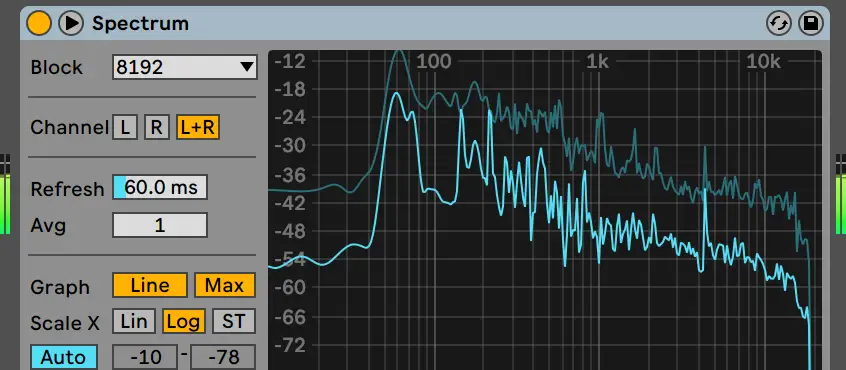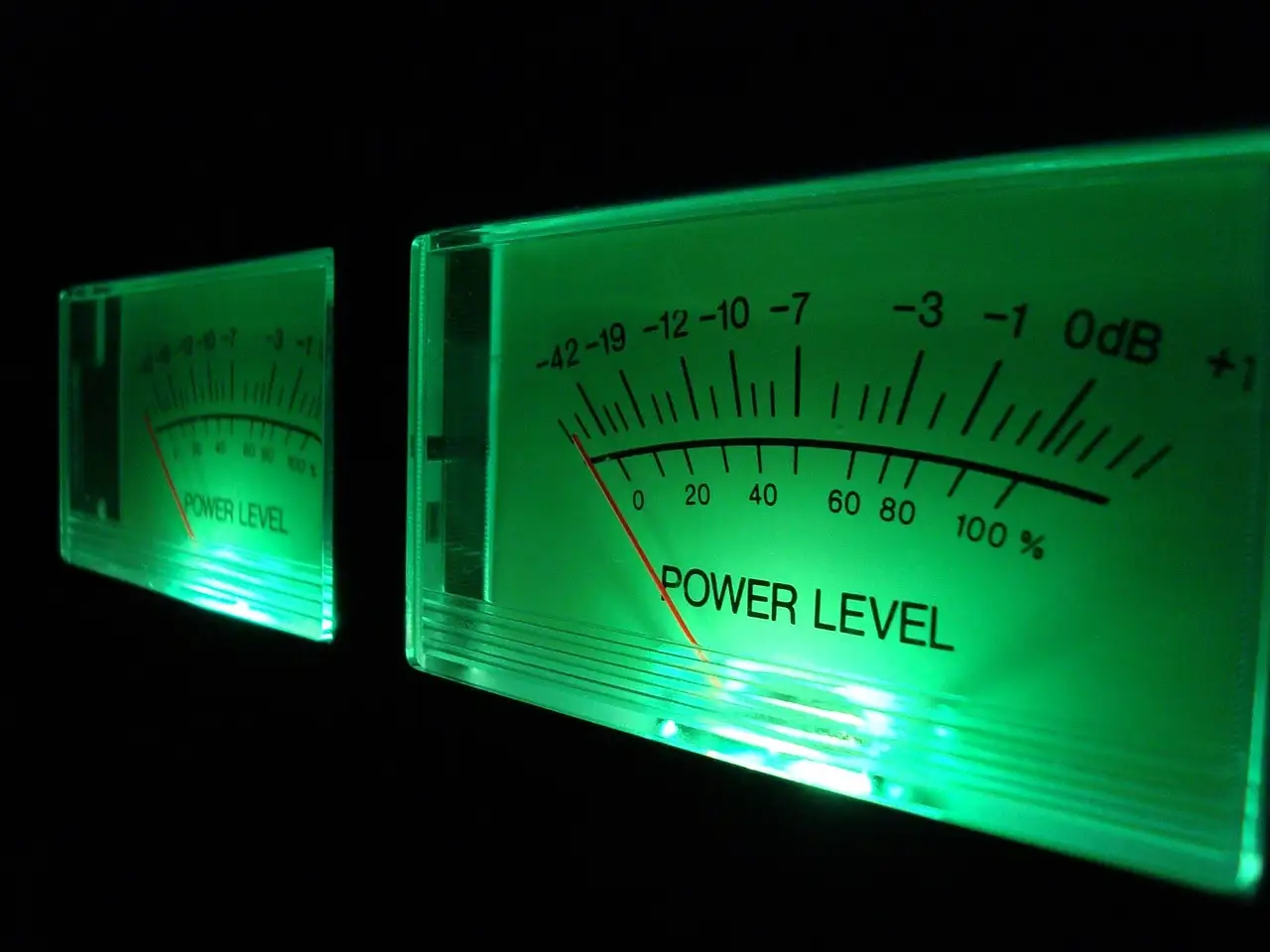Whether you're live mixing or testing levels before hitting record in your DAW, audio metering is a consistent part of the recording process. Learning how to use and decode various audio meters can help you protect analog and digital signals, preserving the audio from sound source to listener.
While the vast array of audio meters available may feel overwhelming at first glance, anyone can learn how to read meters with a couple of simple pieces of guidance. Below, we'll detail the importance of audio signal meters and share exactly how to read the most common types of meters.
What Is Audio Metering?
Audio meters are powerful visual aids that are used to represent the dynamic range, frequency balance, amplitude balance, or any other characteristics pertaining to audio. Metering is particularly important during the mixing and mastering process since it can give us an objective view of where our sound stands.
We can use different types of audio meters within our DAWs, though certain pieces of hardware equipment have audio metering built into their respective interfaces.
LUFs vs. dBs: What's the Difference?
When using audio meters, you're likely to see both dB units (decibels) and LUFs (loudness units relative to full scale). While one decibel is equal to one LUF, it's important to remember that LUFs take into account the human ear's perceived loudness level, while decibels simply measure sound pressure. Today, most broadcasting and streaming platforms have standards based on LUFs.
The Different Types of Audio Meters
There are several different types of audio meters, each with its specific use case. Here are a couple of common meter types you're likely to come across as an audio engineer:
Loudness Meter
Today, modernized recording has combined the strengths of multiple meters, to give engineers a quick response time and accurate reading of several different values. One of the most common loudness meters is a LUFs loudness meter, which provides momentary, short-term, and integrated metering values.
This way, you can see the maximum peak level at any given amount, along with the average level of sound at a quick glance. Streaming platforms and broadcast production houses alike will often require certain LUF levels that engineers use as a reference throughout their workflows.
True Peak Meter
When you're checking your mix or master for any points of potential distortion or clipping, it's wise to use a true peak meter. True peak measures the loudest peak in a signal. This meter responds instantaneously, giving you a reading of the signal at any given moment. With peak meters, you'll want to keep peaks below 0 dB for digital audio and -3 dB for analog gear. Any peaks past these standardized points will produce clipping.
VU Meter
A VU meter or volume unit meter was originally used to determine the average amplitude intensity of hardware equipment, which is why VU meters continue to be seen on hardware compressors and outboard gear to this day. VU meters helped set the loudness standards of today, with anything above 0 dB opening the door to potential clipping or distortion.
RMS Meter
RMS, which stands for root mean square, is used to measure the average loudness level of a track. This average level is taken during a period of roughly 300 milliseconds and can provide another data point while targeting your ideal loudness range. RMS and VU meters both display an average of perceived loudness, which is in contrast to true peak meters or PPM meters which indicate the loudness at any given point rather than the median level.
Frequency Meter
Frequency meters come in many shapes and sizes, aiming to document the distribution of sound across the frequency spectrum. This is often seen through spectrum analyzers, which showcase frequencies across a graph with the lowest range on the left side and the highest range on the right side, much like what you would expect on a graphic equalizer:

This meter showcases the concentration of frequency balance with peaked lines. The higher the peak, the greater the concentration of that particular frequency range. This is just one type of spectrum analyzer, but you'll also come across variations like a spectrogram.
Phase Correlation Meter
Phase correlation meters, sometimes simply referred to as phase meters, display the offset between two signals within a stereo setting. This meter shows whether the left and right channels of the stereo signal are in or out of phase. With these digital meters, +1 depicts perfect alignment, while -1 communicates opposite alignment. You'll want to shoot for a phase correlation around or above 0.5 throughout your mix if possible, as values below 0 can equate to some level of phase cancellation.
Not sure what phase cancellation is? Take a listen to this simulation created by Audio University:
Key Advantages of Audio Metering
Audio metering can make quite a difference when it comes to live mixing. Consider some of these benefits when working metering into your audio workflow:
Understanding Dynamic Range
Audio metering can give you key indicators surrounding amplitude and the distance between the loudest and softest parts of your mix, or dynamic range. This information can help you make important mixing decisions like refactoring the balance between certain tracks or informing more or less compression on your effect chain.
Live Mixing
It can be particularly challenging to trust your ears in a live environment. A meter response can help you find the average level and peak levels of your tracks with just a glance. Proper metering helps keep sound as consistent as possible and reduces the likelihood of feedback or other potential errors that can be at a higher risk level during live performance.

Objective Perspective
You should never rely on meters alone. The human ear is unique in how it perceives sound and those nuances often come with the specialized perspective that gives music its magic. At the same time, our ears can be fallible and cannot always be fully trusted, especially after being fatigued from listening to the same track repeatedly over time.
Metering can give us the true average levels, peak levels, and accurate frequency response so that we can inform our creative decisions. Think of metering as your left brain and what you bring to the table creatively as the right brain. Both the technical tool and your subjective perspective come together to produce a strong mix.
Improving Your Signal to Noise Ratio
Meter responses on digital and hardware gear alike help us optimize our signal to noise ratio, or improve the strength of our sound source's signal. Setting proper levels from the get-go ensures that your signal strikes a balance of remaining clear, but not with an extreme loudness that causes distortion.
Audio Metering FAQ
Are you still getting a handle on audio metering? Here are some commonly asked questions and answers to expand your understanding:
What is audio metering?
Audio metering is simply the process of visually representing characteristics of audio signals. These visual aids can be used to help audio engineers throughout the recording and mixing process. You'll want to use audio meters in live performance environments and while recording and mixing to help you make informed choices. Audio meters measure loudness, frequency content, and other defining signal traits.
What is metering on a microphone?
There are some select microphones, like those from the Blue Yeti series that may have some metering system or indicator built-in to the hardware to prevent clipping. However, in most cases, audio metering occurs on your mixer, interface, or within your DAW which is why it's essential to learn how to navigate between different meter types.
How does loudness metering work?
Loudness meters use psychoacoustic technology to mimic human hearing perception, weighing individual frequency balance accordingly. They typically measure sound in LUFs or Loudness Units relative to full scale. These standardized units help set standards for broadcasting as well as streaming platforms like Spotify and Netflix.
How do you read an audio meter?
How you read an audio meter will depend on which meter and piece of equipment you're working with. Today, most loudness meters are based on LUFs and provide multiple different measurements within the same tool displaying the average and peak levels of a sound. There are also different meters used to measure phase correlation and distribution across the frequency spectrum, the loudness meters you'll come into contact with most often.
Why is audio metering important?
Analog and digital metering can help us understand certain things about our audio that we might otherwise miss due to our limited perception or otherwise. For instance, metering can help us prevent digital clipping and provide more tonal balance by giving us key indicators of the state of our audio.
In short, audio metering is an important tool that can help you make sense of your mix or live recording or performance environment. These tools can all provide different information that should be used to aid your overall perception and make engineering decisions accordingly. Be sure to practice monitoring levels in your next mix.





